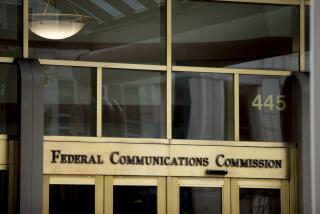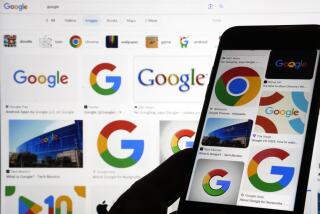Government to Make Its Web Sites More Disabled-Friendly
- Share via
WASHINGTON — Most federal agencies will have to redesign their Web sites within the next six months to comply with guidelines issued last week that will make the pages more accessible to people with disabilities.
The rules are designed to make it easier for the blind, the deaf and those with other disabilities to use federal technology services such as Web sites and databases.
“I think this is a truly significant step forward. It helps not only the disabled but all federal workers,” said Sally Katzen, deputy director for management at the White House’s budget office and chairwoman of the federal Council of Information Technology Officers. “This is where the federal government should be.”
Many of the changes will be easy, officials said, and reflect good Web-design practices. But others, especially involving devices that can’t currently accept alternate methods of input, might be costly to change.
Advocacy groups for people with disabilities said they were pleased with the standards.
“These regulations are necessary to implement the law at minimal cost, and fairly,” said Brewster Thackeray, spokesman for the National Organization on Disability, adding that they also should help the disabled find work in the government.
The rules “will ensure that the Web sites are accessible,” said James Gashel, director of governmental affairs at the National Federation of the Blind in Baltimore. “These standards will be absolutely ideal.”
Gashel, who is blind, said he frequently has trouble using flashy graphics-laden Web sites. He uses a device that reads the text of a page to him, and he uses his computer keyboard to select links or skip through long passages.
While the Web’s programming language includes a way to have a few words explain each image--invisible to the casual user when the graphics load on a page--many Web designers fail to include those data.
The new standards require that those graphics be labeled. The rules also state that areas in color should be provided also without color, and that complicated tables and similar Web constructs should have text legends.
Many federal sites offer government documents in Adobe Acrobat format, which shows documents as images true to how they look in print. But these files also are unreadable for Gashel, so the sites must soon also offer them in plain text.
Gashel and federal officials pointed out that these practices will benefit more than the disabled. For example, people who browse the Web on hand-held wireless devices that can’t show pictures or color would be able to navigate federal Web sites more easily.
Only federal Web sites and property are affected by the guidelines, which were devised by the interagency U.S. Access Board. They take effect June 21.
Doug Wakefield, who helped devise the standards at the Access Board, could not say how many federal Web sites will be affected, but he estimated that hundreds of agencies and at least 4,000 Web sites, some with many separate pages, will be included.
The most expensive elements to change will be self-contained systems like the Park Service’s mobile information kiosks. Overall, Wakefield said, compliance could cost the government $100 million to $600 million.
“This has never been tackled before, so it’s very hard to even establish a baseline for something this new,” he said.
Future products, like biometric scanners that use fingerprints or retinal scans to verify a person’s identity, also are covered. The scanners will need to offer an alternate form of identity verification for the disabled.
Wakefield said since so few of those devices are currently used by the government, there won’t be a high cost of replacement.
“It’s fairly new, so it can be designed in as they go along,” he said. “In this case, the awareness will be there before the technology.”
On the Web
For more information about new federal rules on Web designs for the disabled, check out the following sites:
Access Board: www.access-board.gov
National Organization on Disability: www.nod.org
National Federation of the Blind: www.nfb.org
Source: Associated Press
More to Read
Sign up for Essential California
The most important California stories and recommendations in your inbox every morning.
You may occasionally receive promotional content from the Los Angeles Times.










